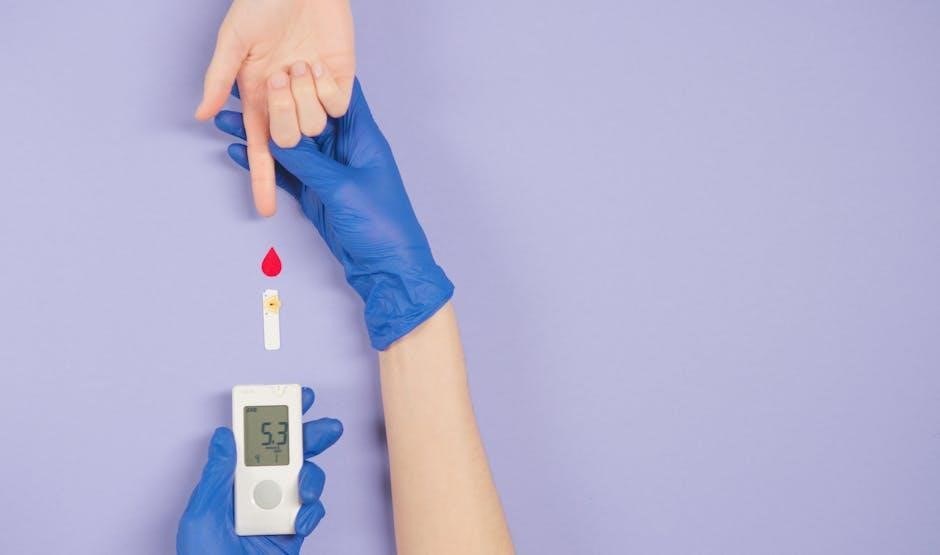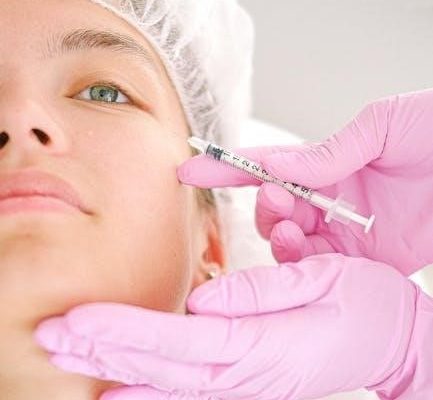Needle stick injuries pose significant risks to healthcare workers, often causing stress and potential exposure to bloodborne pathogens. Adhering to protocols is crucial for minimizing these risks and ensuring prompt, effective responses to such incidents.
1.1 Definition and Overview
A needle stick injury is an accidental puncture wound caused by a needle, often occurring in healthcare settings. It poses risks of exposure to bloodborne pathogens like HIV, HBV, and HCV. Immediate actions, such as wound care and reporting, are crucial. Prompt response helps prevent infection and ensures proper management, minimizing risks for healthcare workers exposed to sharps.
1.2 Importance of Proper Protocol
Proper protocol for needle stick injuries is critical to minimize exposure risks and prevent infection. Immediate wound care, reporting, and medical evaluation are essential steps to ensure timely intervention. Compliance with established guidelines, such as OSHA standards, helps reduce the risk of bloodborne pathogen transmission and ensures a structured response, protecting both workers and organizations from potential legal and health consequences.

Prevention Measures
Preventing needle stick injuries requires safe handling of sharps, using safety-engineered devices, and proper training. These measures reduce risks and ensure a safer workplace for healthcare professionals.
2.1 Safe Handling and Disposal of Sharps
Safe handling involves using puncture-resistant gloves and avoiding recapping needles. Dispose of sharps in designated containers immediately after use. Proper techniques prevent accidental exposure, ensuring a safer environment for healthcare workers and reducing injury risks. Adhering to these protocols minimizes hazards and promotes workplace safety.
2.2 Use of Safety-Engineered Devices
Safety-engineered devices, such as needleless connectors and safety syringes, are designed to reduce needlestick injuries. These devices feature protective mechanisms like shields or retractable needles, minimizing exposure risks. Their use is strongly encouraged by regulatory guidelines to enhance workplace safety and prevent bloodborne pathogen exposure. Implementing these devices significantly lowers injury rates and promotes a safer healthcare environment.
2.3 Training and Education
Comprehensive training programs are essential for preventing needlestick injuries. These programs should cover safe handling of sharps, proper disposal methods, and the use of safety-engineered devices. Regular updates ensure staff are informed about the latest protocols and industry standards. Education empowers healthcare workers to adopt best practices, reducing the risk of exposure and ensuring compliance with workplace safety guidelines.

Immediate Response to a Needle Stick Injury
Immediate response includes allowing the wound to bleed freely, washing with soap and water, and reporting the incident promptly to ensure timely medical evaluation and proper care and protocol.

3.1 Wound Care and Bleeding
Immediate wound care involves allowing the injury to bleed freely and rinsing with soap and water or saline solution for skin/mucous membrane exposure. Avoid harsh scrubbing or using harsh soap. Do not apply antibiotics or cauterize the wound. These steps help reduce the risk of infection and prepare for further medical evaluation and potential post-exposure prophylaxis.
3.2 Reporting the Incident
Immediately report the needle stick injury to a supervisor or designated authority, providing details about the incident. Complete an incident report form, including the type of injury, circumstances, and exposure source. This documentation is essential for initiating medical evaluation, post-exposure prophylaxis, and legal compliance, ensuring prompt and appropriate actions are taken to protect the affected individual.
Medical Evaluation and Testing
Medical evaluation involves bloodborne pathogen screening, vaccination status checks, and baseline blood storage. Follow-up testing is scheduled to monitor potential infection and ensure timely intervention.
4.1 Bloodborne Pathogen Screening
Bloodborne pathogen screening is essential after a needle stick injury to detect potential exposure to HIV, HBV, or HCV. Baseline blood samples are collected immediately and tested for infections. Follow-up tests are conducted at 3 and 6 months to monitor seroconversion. This process ensures early detection and timely intervention, reducing the risk of long-term health complications for the affected individual.
4.2 Vaccination Status Check
Checking the vaccination status of the injured individual is critical after a needle stick injury. This includes verifying Hepatitis B vaccination and immune status to determine if booster doses or prophylaxis are needed. Ensuring up-to-date vaccinations helps prevent infection transmission and guides appropriate post-exposure prophylaxis. This step is vital for tailoring the response to the individual’s specific immune profile and minimizing health risks effectively.
4.3 Baseline Blood Storage
Baseline blood storage is essential for monitoring potential infection transmission after a needle stick injury. Blood samples are collected immediately post-exposure and stored for comparison in follow-up tests. This allows healthcare providers to assess seroconversion or infection development. Proper storage and labeling ensure sample integrity, aiding in accurate diagnosis and treatment planning. This step is critical for long-term health monitoring and risk assessment.
Post-Exposure Prophylaxis (PEP)
PEP involves antiretroviral drugs to prevent HIV infection after exposure. It is most effective when initiated promptly, ideally within hours of the incident, and continued for 28 days.
5.1 HIV PEP
HIV PEP is a critical intervention to prevent seroconversion after a high-risk needle stick injury. It involves administering antiretroviral drugs promptly, ideally within hours of exposure, and continuing for 28 days. The regimen is tailored based on the risk assessment and the source patient’s HIV status. Immediate medical evaluation, baseline blood storage, and follow-up testing are essential components of HIV PEP management.
5.2 HBV Prophylaxis

HBV prophylaxis is essential after a needle stick injury to prevent hepatitis B transmission; Immediate steps include assessing the injured person’s vaccination status. If unvaccinated or with incomplete series, administer hepatitis B immune globulin (HBIG) and a vaccine booster. Monitoring for seroconversion and ensuring completion of the vaccination series are critical. This approach minimizes the risk of HBV infection in exposed individuals.

Documentation and Reporting
Accurate documentation of needle stick injuries is crucial for tracking trends and ensuring compliance. Incident report forms must detail injury type, exposure source, and follow-up actions taken.
6.1 Incident Report Forms
Incident report forms are essential for documenting needle stick injuries, ensuring detailed records of the event. Forms should include the type of injury, exposure source, and immediate actions taken. Accurate documentation helps track trends, identify safety gaps, and ensure compliance with OSHA guidelines. Proper reporting also facilitates prompt medical evaluation and follow-up care, protecting both the affected worker and the organization.
6.2 Recordkeeping Requirements
Accurate recordkeeping is vital for compliance with OSHA guidelines and managing needle stick injuries. Employers must maintain detailed records, including incident reports, medical evaluations, and follow-up testing. Blood samples for storage and baseline testing must be documented, along with vaccination status and PEP administration. Records should be kept confidential and accessible for audits, ensuring adherence to legal and safety standards while protecting worker health and organizational accountability.
Follow-Up and Monitoring
Follow-up and monitoring are crucial after a needle stick injury, including scheduled testing for bloodborne pathogens and storing blood samples for future reference to ensure early detection of potential infections.
7.1 Scheduled Testing
Scheduled testing is essential after a needle stick injury to monitor for potential infections. Baseline blood samples are stored for comparison, and follow-up tests are conducted at 3 and 6 months. This includes screening for HIV, HBV, and HCV to ensure early detection and timely intervention. Documentation of all test results is crucial for tracking and ensuring compliance with exposure protocols.
7.2 Medical Follow-Up
Medical follow-up after a needle stick injury involves regular monitoring and care to prevent infection. Immediate evaluation by a healthcare provider is crucial, and baseline blood samples are stored for future testing. Follow-up appointments with infectious disease specialists are often necessary, especially if the source patient has a bloodborne virus. Documentation and tracking of test results ensure comprehensive care and compliance with safety protocols. Psychological support is also provided to address stress and anxiety, and counseling services are available to help the individual cope with the incident; This ensures a holistic approach to recovery and well-being.

Legal and Regulatory Compliance
Compliance with OSHA guidelines and the Needlestick Safety and Prevention Act is essential. Employers must implement safety protocols, maintain incident records, and ensure proper reporting to avoid legal repercussions.
8.1 OSHA Guidelines
OSHA’s Needlestick Safety and Prevention Act mandates employers to implement safety measures, including the use of safety-engineered devices and training programs. Employers must maintain incident reports, provide post-exposure prophylaxis, and ensure compliance with bloodborne pathogen standards. Adherence to these guidelines protects employees from occupational hazards and reduces legal liabilities, fostering a safer workplace environment in healthcare settings.
8.2 Workplace Safety Standards
Workplace safety standards emphasize proper sharps disposal, use of safety-engineered devices, and regular training programs. Employers must ensure compliance with regulations, conduct risk assessments, and maintain incident reports; Proper workstations, avoidance of risky practices like needle recapping, and immediate post-exposure protocols are critical. These standards aim to minimize hazards, protect employees, and promote a culture of safety in healthcare environments.
Risk Assessment
Risk assessment evaluates factors like needle type, injury severity, source patient status, and vaccination history to determine bloodborne pathogen transmission risk, guiding appropriate follow-up actions.
9.1 Determining Exposure Risk
Determining exposure risk involves assessing the source patient’s infection status, the type of needle used, and the injury’s nature. Protocols include evaluating bloodborne pathogen presence, needle contamination, and injury severity to guide appropriate medical responses and prevent potential infections. This step is critical for deciding the need for post-exposure prophylaxis and follow-up testing.
9.2 Source Patient Evaluation
Source patient evaluation involves assessing their infection status for bloodborne pathogens like HIV, HBV, and HCV. This includes obtaining blood samples with informed consent and reviewing medical history. The evaluation helps determine the risk of transmission and guides post-exposure prophylaxis. If the source is confirmed positive, immediate measures are taken to prevent infection spread and monitor the exposed individual’s health status closely.

Special Considerations
Special considerations include managing high-risk exposures, pediatric and geriatric cases, and unique scenarios involving sharps injuries. These cases require tailored approaches to ensure optimal outcomes and safety.
10.1 High-Risk Exposures
High-risk exposures involve large volumes of blood, deep wounds, or contact with HIV or HBV-positive sources. Immediate wound care, reporting, and medical evaluation are critical. Post-exposure prophylaxis (PEP) may be necessary to prevent infection transmission, ensuring prompt intervention to safeguard health and reduce long-term complications in such sensitive cases.
10.2 Pediatric and Geriatric Cases
Pediatric and geriatric populations require special consideration in needle stick injury protocols due to unique physiological and developmental factors. Children may face challenges in communicating injuries, necessitating close monitoring and psychological support. Elderly individuals, with thinner skin and potential bleeding disorders, may need tailored wound care and infection monitoring, ensuring age-specific adjustments in treatment and follow-up to address their vulnerabilities effectively.
Psychological Support
Psychological support is essential for individuals experiencing needle stick injuries, addressing anxiety, stress, and emotional trauma. Counseling services and stress management techniques help ensure mental well-being and recovery.
11.1 Counseling Services
Counseling services play a vital role in addressing the emotional and psychological impact of needle stick injuries. These services provide a safe, confidential space for individuals to discuss their concerns, fears, and anxiety. Trained professionals offer coping strategies and support to help employees manage stress and regain confidence. Counseling is essential for promoting mental well-being and ensuring a smooth return to work after such incidents.
11.2 Stress Management
Stress management is crucial for healthcare workers after a needle stick injury, as the emotional and psychological impact can be significant. Techniques such as mindfulness, relaxation exercises, and stress reduction programs help alleviate anxiety and depression. Employers should encourage a supportive environment, promoting open discussions about the incident. This approach fosters resilience and reduces long-term mental health complications, ensuring the well-being of affected individuals.
Adhering to needle stick injury protocols is essential for ensuring safety and minimizing risks. Proper guidelines and immediate responses are critical to protecting healthcare workers’ well-being and preventing infections.
12.1 Summary of Key Points
Key aspects of needle stick injury protocols include immediate wound care, incident reporting, bloodborne pathogen screening, and post-exposure prophylaxis. Proper documentation, legal compliance, and regular follow-up are essential. Training, safe handling of sharps, and use of safety-engineered devices prevent injuries. Adherence to OSHA guidelines and workplace safety standards ensures a protected environment for healthcare workers, minimizing risks and promoting overall well-being.
12.2 Importance of Compliance
Compliance with needle stick injury protocols is essential to protect healthcare workers from bloodborne pathogens and legal liabilities. Adhering to OSHA guidelines ensures proper incident reporting, documentation, and implementation of safety measures. Non-compliance increases the risk of infections and penalties, while compliance fosters a safe work environment, accountability, and adherence to best practices, ultimately safeguarding both employees and employers.



